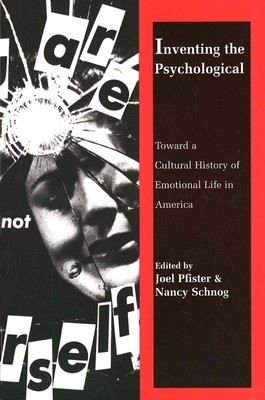
- We will send in 10–14 business days.
- Publisher: Yale University Press
- ISBN-10: 0300070063
- ISBN-13: 9780300070064
- Format: 15.6 x 23.6 x 2 cm, softcover
- Language: English
- SAVE -10% with code: EXTRA
Inventing the Psychological (e-book) (used book) | bookbook.eu
Reviews
Description
When and why did it become chic for members of the white middle and upper classes to perceive and value themselves as neurotic, primitive, and emotionally fragile? Is the popular tendency to define the self in psychological language derived from revealed (Freudian) truths, or does American culture for various purposes invent and promote emotional and psychological identities?
In this fascinating book, distinguished interdisciplinary scholars show that the ways Americans imagine innerness and emotions have been shaped by mass media, economics, domesticity, and the arts. The authors investigate how changes in ideologies of the family, class, race, gender, and sexuality over the past two centuries relate to shifts in Americans' visions of self and psyche; they study the psychological as a changing cultural category and emotions as historically shifting self-definitions. Their compelling topics include how the Romantic idea of moods was appropriated by nineteenth-century female authors of sentimental fiction; how black jazz musicians have responded to white interpretations of African-American jazz as emotionally and aesthetically deep; and whether women's confessions of victimization on the Oprah Winfrey Show are akin to 1970s feminist consciousness-raising groups. Provocative and timely, the book challenges the premises of psychohistory and the dominant ways in which Americans have been taught to conceptualize the making of psychological and emotional life.EXTRA 10 % discount with code: EXTRA
The promotion ends in 17d.07:19:42
The discount code is valid when purchasing from 10 €. Discounts do not stack.
- Publisher: Yale University Press
- ISBN-10: 0300070063
- ISBN-13: 9780300070064
- Format: 15.6 x 23.6 x 2 cm, softcover
- Language: English English
When and why did it become chic for members of the white middle and upper classes to perceive and value themselves as neurotic, primitive, and emotionally fragile? Is the popular tendency to define the self in psychological language derived from revealed (Freudian) truths, or does American culture for various purposes invent and promote emotional and psychological identities?
In this fascinating book, distinguished interdisciplinary scholars show that the ways Americans imagine innerness and emotions have been shaped by mass media, economics, domesticity, and the arts. The authors investigate how changes in ideologies of the family, class, race, gender, and sexuality over the past two centuries relate to shifts in Americans' visions of self and psyche; they study the psychological as a changing cultural category and emotions as historically shifting self-definitions. Their compelling topics include how the Romantic idea of moods was appropriated by nineteenth-century female authors of sentimental fiction; how black jazz musicians have responded to white interpretations of African-American jazz as emotionally and aesthetically deep; and whether women's confessions of victimization on the Oprah Winfrey Show are akin to 1970s feminist consciousness-raising groups. Provocative and timely, the book challenges the premises of psychohistory and the dominant ways in which Americans have been taught to conceptualize the making of psychological and emotional life.

Reviews